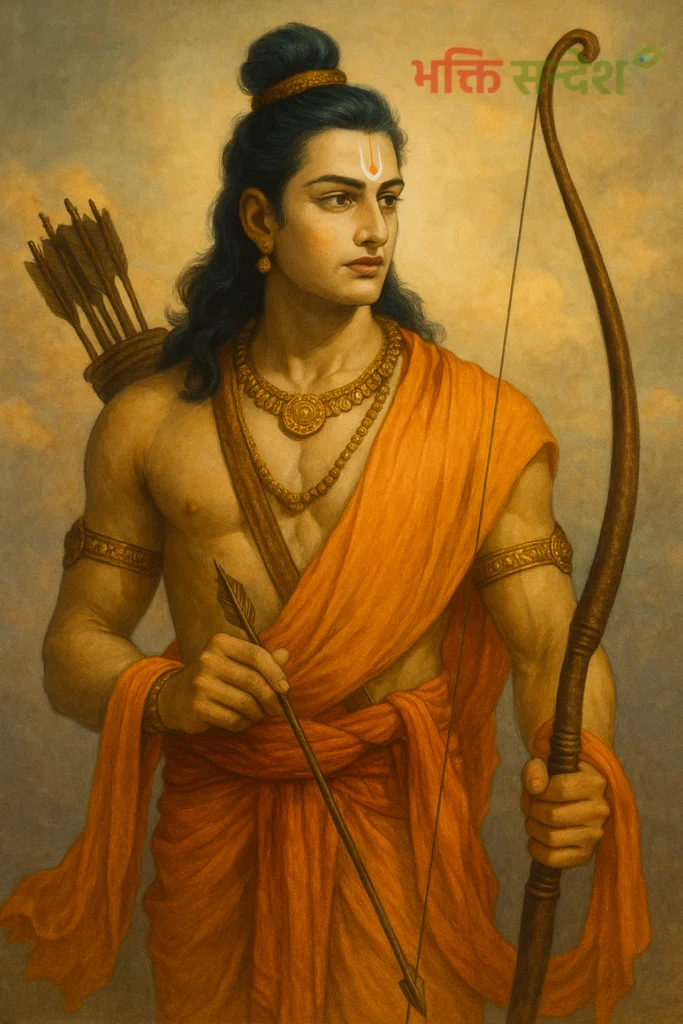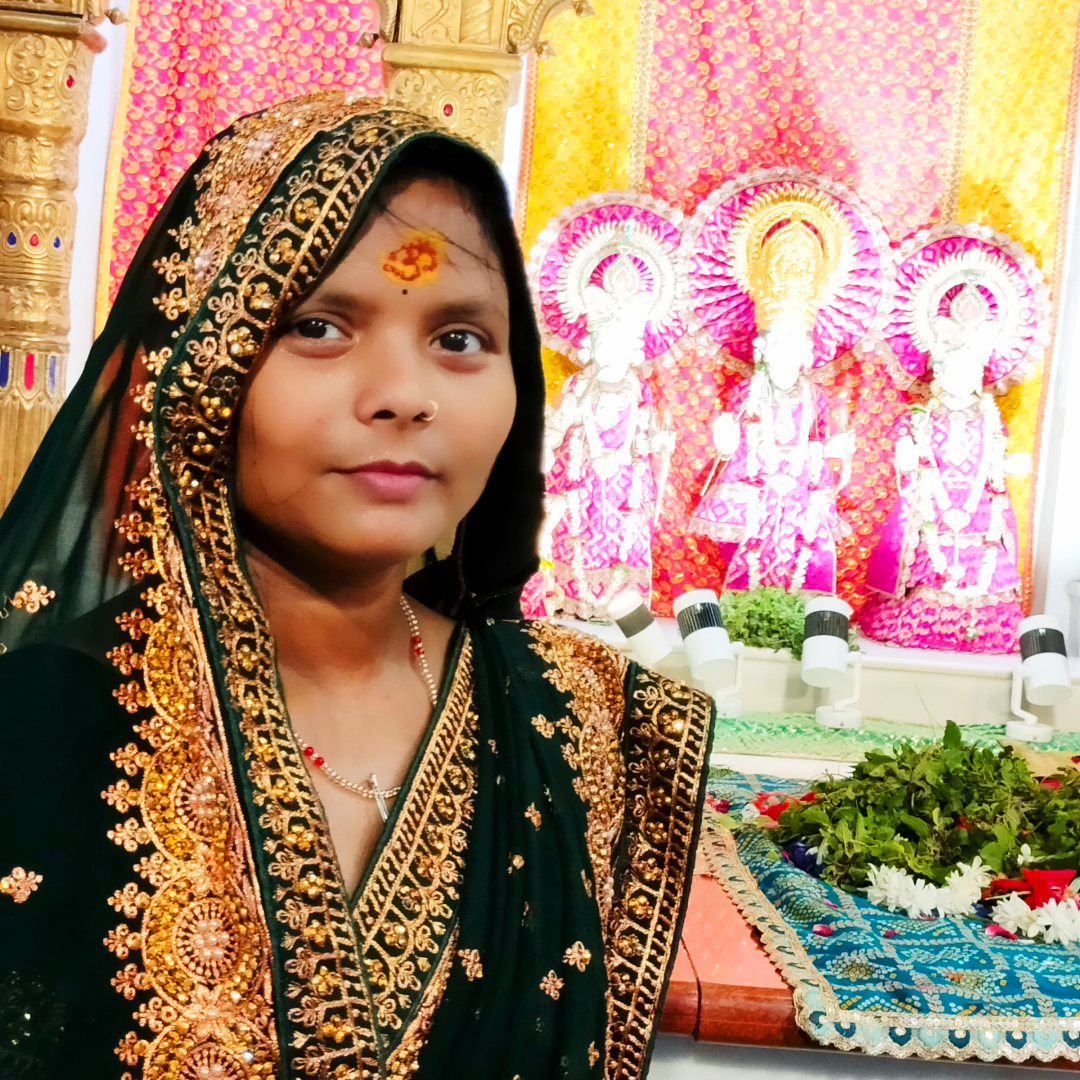Lord Vishnu is considered the protector of Sanatan Dharma, who incarnates whenever unrighteousness rises on Earth to re-establish dharma. People often search for 7 Avatar of Vishnu to learn about this specific incarnations that played a vital role in the welfare of humanity. In this article, we will introduce the 7 incarnations of Lord Vishnu:
Who Was the 7th Avatar of Lord Vishnu?
The 7th avatar of Lord Vishnu was Shri Ram. He incarnated during the Treta Yuga to restore dharma (righteousness) and defeat the demon king Ravana, who had become a symbol of ego, injustice, and terror across the three worlds.

7 Avatar Of Vishnu With Story
In the Treta Yuga, when the demon king Ravana and other rakshasas spread terror and unrighteousness across the earth, the gods prayed to Lord Vishnu for protection. Responding to their plea, Vishnu incarnated as Shri Ram, the son of King Dasharatha and Queen Kaushalya in the holy land of Ayodhya.
Lord Rama’s Early Battles: Triumph Over Demons Tataka and Subahu
Even in his youth, Rama was entrusted with divine responsibilities. One such mission was to rid the forest of the demoness Tataka, a fearsome creature who terrorized sages and disrupted sacred rituals. With divine guidance and his celestial bow in hand, Rama defeated Tataka, restoring peace and righteousness to the region.
Following this, he also vanquished Subahu, another demon who disrupted sacrificial rites. These early victories were not just physical—they were symbolic of Lord Rama’s unwavering commitment to dharma (righteousness) and his role as a protector of the virtuous.
The Challenge of Lord Shiva’s Bow: Winning Sita’s Hand in Swayamvara
A pivotal moment in Lord Rama’s life came during the Swayamvara of Sita, the divine daughter of King Janaka. To marry her, suitors were required to lift and string the mighty bow of Lord Shiva—a challenge no ordinary man could even attempt.
When Lord Rama stepped forward, he not only strung the bow with grace and ease, but snapped it in two, astonishing all. This supreme act of strength, humility, and divine will won him the hand of Goddess Sita, and marked the beginning of one of the most revered love stories in human history.
The 14-Year Exile and the Abduction of Sita by Ravana
Life took a sorrowful turn when Queen Kaikeyi, misled by her maid Manthara, demanded that her son Bharata be crowned king and that Rama be exiled for 14 years. Bound by duty and devotion to his father’s word, Rama embraced the exile, accompanied by Sita and his devoted brother Lakshmana.
During this exile, the trio faced many trials, but the greatest came when Ravana, disguised as a sage, abducted Sita and whisked her away to the island of Lanka, setting the stage for the battle between good and evil.
The Arrival of Lord Hanuman: A Divine Ally Joins the Quest
No tale of Ramayana is complete without the glorious presence of Lord Hanuman, the embodiment of strength, devotion, and service.
Upon meeting Lord Rama, Hanuman pledged eternal loyalty and played a pivotal role in locating Sita in Lanka. His leap across the ocean, his burning of Lanka, and his devotion to Rama have made him one of the most beloved deities in Hinduism.
He also brought the Sanjeevani herb to save Lakshmana during the battle—an act that sealed his place in divine history as the ultimate devotee.
The Epic War: Lord Rama vs. Ravana
With the help of his allies, Hanuman, Lakshmana, Sugriva, Jambavan, and the Vanara army, Rama launched a campaign to Lanka, building the legendary Ram Setu to cross the ocean.
The war that followed was of cosmic proportions. Rama’s arrows, charged with divine energy, pierced through the ten heads of Ravana, finally ending his reign of terror and restoring cosmic balance.
This victory was not just of a prince over a king—it was the victory of righteousness over ego, love over hate, and light over darkness.
Sita’s Agnipariksha: A Test of Purity
Though Sita was rescued, society’s whispers questioned her chastity after captivity. To silence doubt and prove her purity, Sita underwent the Agni Pariksha, the trial by fire. She emerged unscathed, glowing with divine brilliance, affirming her virtue.
This heart-wrenching episode reflects the complexity of dharma, where personal sacrifice and societal duty often clash.
Lessons from the Life of Lord Rama
The Ramayana is a spiritual treasure trove filled with timeless wisdom. It teaches us that true strength lies in humility, that sacrifice is the foundation of love, and that righteousness must be upheld, no matter the cost.
- Rama’s loyalty to his father teaches us the value of obedience and sacrifice.
- His unwavering love for Sita reminds us of the power of commitment.
- His bond with Lakshmana, Bharata, and Hanuman reflects the importance of family and friendship.
- His battle against Ravana is a reminder to fight inner demons like pride, anger, and greed.
Why Is Shri Ram Called ‘Maryada Purushottam’?
Shri Ram is known as Maryada Purushottam, meaning “the Supreme Being who always upheld dignity and righteousness.” He followed his duties not for personal gain, but for the welfare of others. His relationships as, a son, husband, brother, and king, were bound by honor, compassion, and unwavering ethics. Ram showed the world that true greatness lies in self-restraint, sacrifice, and service.
If you wish to know all ten Dashavataras of Lord Vishnu, do read our article on the Dashavatara of Lord Vishnu. Also, our special articles like the story of Matsya Avatar and the glory of Varaha Avatar provide in-depth information that will further strengthen your path of devotion.
Other than 7 Avatars Of Lord Vishnu, If you wish to know all ten Dashavataras of Lord Vishnu, do read our article on the Dashavatara of Lord Vishnu. Also, our special articles like the story of Matsya Avatar and the glory of Varaha Avatar provide in-depth information that will further strengthen your path of devotion.
Influence and Legacy of Lord Rama
- The life of Lord Rama continues to inspire generations across centuries. As the seventh avatar of Lord Vishnu, he embodies the ideals of a perfect son, devoted husband, loving brother, and righteous king.
- His influence pervades every aspect of Indian culture—from literature and temple art to devotional music and festivals. The celebration of Ram Navami each year marks his birth with fervent devotion.
- Rama is not merely a character in a story—he is a living ideal, a symbol of integrity, compassion, and dharma. His reign, often referred to as Ram Rajya, is remembered as the golden age of justice and equality.
FAQ
How many incarnations does Lord Vishnu have?
According to the Puranas, Lord Vishnu is believed to have ten main incarnations, but this article discusses 7 of His major incarnations.
Which Yuga did Shri Ram incarnate in?
Shri Ram incarnated during the Treta Yuga, the second of the four Yugas in Hindu cosmology.
How is Ram different from other avatars of Vishnu?
While other avatars often focused on destroying demons, Shri Ram’s life demonstrated perfect human behavior.
What does the Ram Setu represent in Shri Ram’s story?
Ram Setu symbolizes the power of devotion, teamwork, and divine will, as it was built by Ram and the Vanara army to cross the ocean and rescue Sita from Lanka.

मैं आचार्य सिद्ध लक्ष्मी, सनातन धर्म की साधिका और देवी भक्त हूँ। मेरा उद्देश्य भक्तों को धनवंतरी, माँ चंद्रघंटा और शीतला माता जैसी दिव्य शक्तियों की कृपा से परिचित कराना है।मैं अपने लेखों के माध्यम से मंत्र, स्तोत्र, आरती, पूजन विधि और धार्मिक रहस्यों को सरल भाषा में प्रस्तुत करती हूँ, ताकि हर श्रद्धालु अपने जीवन में देवी-देवताओं की कृपा को अनुभव कर सके। यदि आप भक्ति, आस्था और आत्मशुद्धि के पथ पर आगे बढ़ना चाहते हैं, तो मेरे लेख आपके लिए एक दिव्य प्रकाश बन सकते हैं। जय माँ View Profile